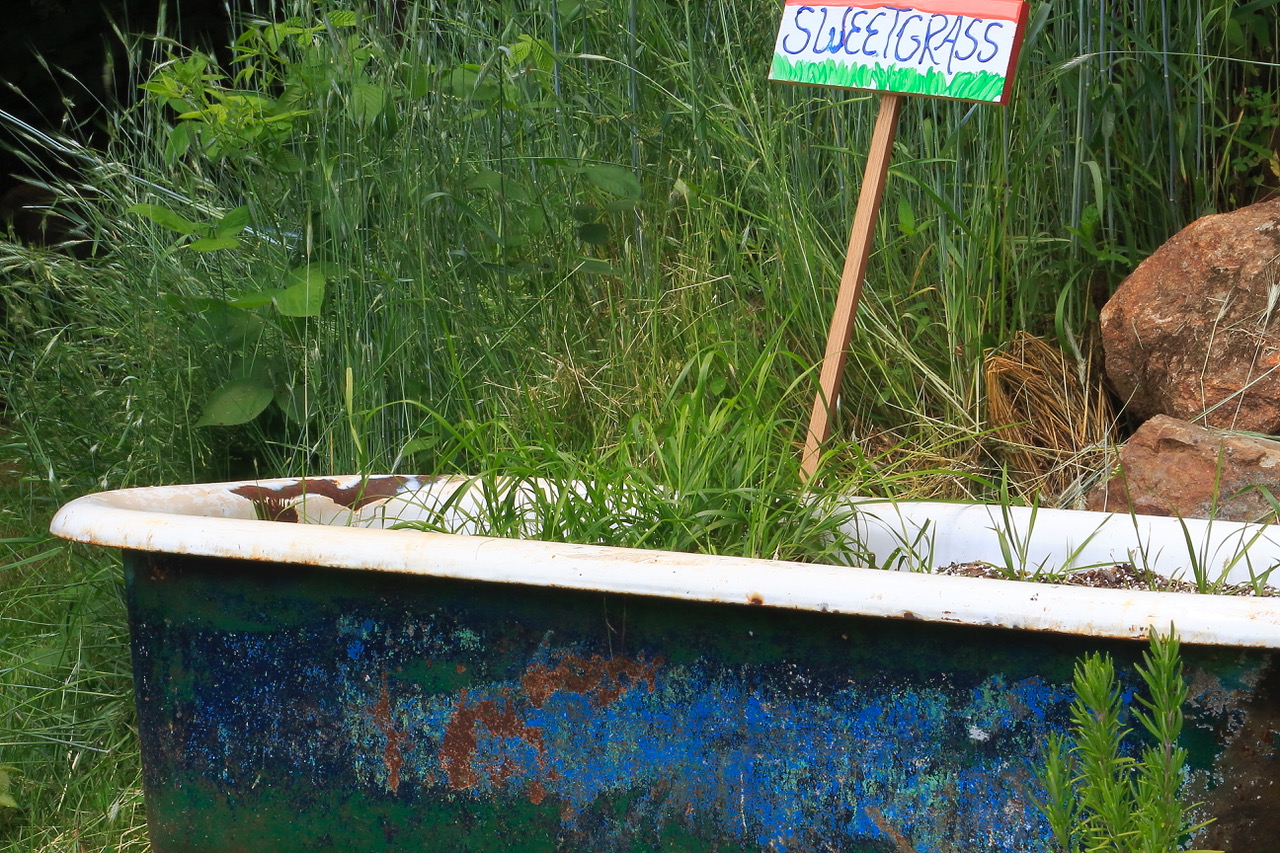Clawfoot Tubs Hold Memories
January 25, 2024By Tom Poland
When I see a clawfoot tub, which is rare, four memories surface. First, I go back to my grandfather’s old homeplace. Next I go back to an abandoned home once magnificent. Then I go back to a farm in the mountains and my last memory takes me to an elegant hotel built in 1898.
Some of you will recall stylish clawfoot tubs. What a classic fixture. We don’t see them much anymore but I hear they’re making a comeback. I hope that’s true. How did they come to be and why did they fade? I have an answer, but for now hold on a bit.
I must have been five or six when I saw my first clawfoot tub. My granddad’s old homeplace sat empty. A “modern” home had taken its place. Aimlessly wandering through the old homeplace, I spied a clawfoot tub. Looking into it I saw the biggest black spider I’d ever seen. I see it as I write.

A patch of sweetgrass grows where many a bath took place.
I’m fortunate, however, to have more pleasant memories. My sister, being aware of my back-road ramblings, gave me a tip. She told me of an abandoned house that had been a wonderful home complete with a library. Exploring it, I came across a bathroom whose floor had given way. An old clawfoot tub had fallen through the rotten floor and listed like a ship about to sink.
A few years back I visited a mountain herb farm. Among its fields of flowers, outcrops of rock, and artfully stacked firewood sat an old clawfoot tub with sweetgrass growing from it. The fragrance of that sweetgrass took me back to my Georgia boyhood when I would pull some “sugar grass” and inhale that candied incense.
Now and then on my trips to Athens, Georgia, during football season, a late night game leads me to stay at the Fitzpatrick Hotel in Washington, Georgia. The rooms there feature clawfoot tubs and black-and-white tiled baths. Staying there evokes memories of descriptions of the classic old hotels in Paris. “That fellow, Hemingway, would have liked this place,” I think, “and so would have James Salter.” One spacious room features a bay window space beneath a handsome cupola. A writing table sits there. It gives me a Paris vibe, but this old hotel with its old tubs holds another memory.
When my mother was twelve (1940), she attended dances in the hotel’s ballroom with its magnificent wooden floors and with gleaming green-tiled fireplaces. I stand in that ballroom and imagine a shy girl with her life before her timidly accepting a request to dance.
Clawfoot tubs? Fiberglass showers and tubs take their place today. That seems like a step back as refinement goes. Those cast iron tubs of yore glazed in enamel signified class. So, what’s their story? When did they come, and where did they go?
Well thank cows for them. First sold in 1873 for use with livestock, people had come to appreciate the tubs by 1885. The old tubs bespoke of a lavish lifestyle in times before plumbing took over. A maid could fill your old tub with hot water and you could immerse yourself in liquid luxury, but nothing lasts forever. The Spanish flu epidemic following World War I proved to be the downfall of the old classic tubs.
Fearful of germs, people felt the hard-to-reach spaces behind and under the tubs gave germs a breeding ground. And that brought change to the tub’s design. Off came the feet. Next came a tiled box around the tub, and what resulted is close to what we see today.
I don’t know about plague-causing germs, but I know big black spiders liked them. Even so, I wouldn’t mind having a classic old clawfoot tub. It’s retro, and more and more I appreciate the old days and old ways. Times back then seemed more genuine, less plastic, and clawfoot tubs to this day seem more elegant, spiders or not. You still see them. I do. One old clawfoot tub holds grass today, and all hold memories for me.
Georgia native Tom Poland writes a weekly column about the South, its people, traditions, lifestyle, and culture and speaks frequently to groups in the South. Governor Henry McMaster conferred the Order of the Palmetto upon Tom, South Carolina’s highest civilian honor, stating, “His work is exceptional to the state.” Poland’s work appears in books, magazines, journals, and newspapers throughout the South.
Visit Tom’s website at www.tompoland.net
Email him at [email protected]















